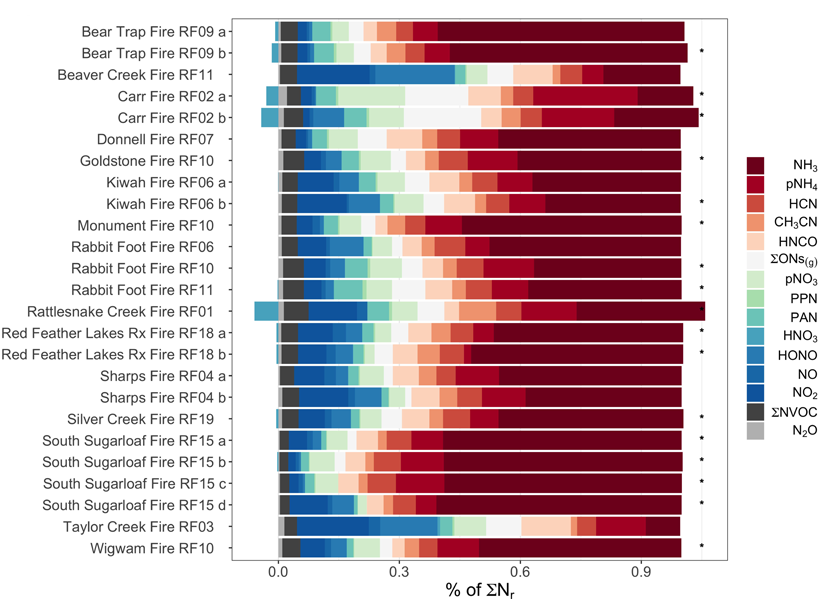Source: Journal of Geophysical Research: Atmospheres
Wildfires are becoming an increasingly significant source of air pollution in the Western United States yet predicting the formation of secondary pollutants (such as ozone and aerosols) remains challenging due to uncertainties in emissions, chemical processes, and variability in burn conditions. Simply, how does one characterize emissions from “1000 small fires all burning differently”? (Jack Dibb, personal communication).
To address this problem, Lindaas et al. [2021] perform a comprehensive analysis of the NSF-sponsored Western Wildfire Experiment for Cloud Chemistry, Aerosol Absorption, and Nitrogen (WE-CAN) field study. During WE-CAN, a research aircraft sampled 23 wildfires throughout the western United States in the summer of 2018. The researchers found that reduced nitrogen comprises a greater fraction relative to oxidized than previously thought, which is expected to alter the chemistry of wildfire smoke. The in-situ analysis provides insights that can lead to improvements in weather-chemistry models that predict ozone and fine particle formation downwind of large wildfires.
Citation: Lindaas, J., Pollack, I. B., Garofalo, L. A., Pothier, M. A., Farmer, D. K., Kreidenweis, S. M., et al. [2021]. Emissions of reactive nitrogen from Western U.S. wildfires during summer 2018. Journal of Geophysical Research: Atmospheres, 126, e2020JD032657. https://doi.org/10.1029/2020JD032657
—Brian McDonald, Associate Editor, JGR: Atmospheres
Text © 2021. The authors. CC BY-NC-ND 3.0
Except where otherwise noted, images are subject to copyright. Any reuse without express permission from the copyright owner is prohibited.

